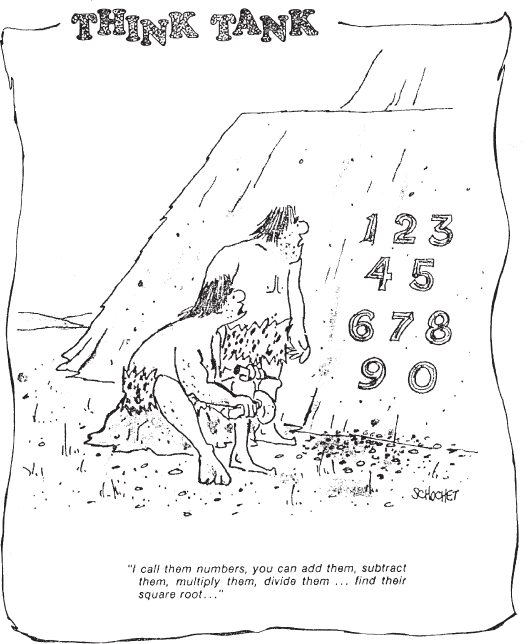CHAPTER 3
NUMBER SYSTEMS

David H. Ahl, Creative Computing, Morristown, NJ
3.0 INTRODUCTION
As humans, we generally count and perform arithmetic using the decimal, or base 10, number system. The base of a number system is simply the number of different digits, including zero, that exist in the number system. In any particular set of circumstances, a particular base might be chosen for convenience, efficiency, technological, or any other reasons. Historically, it seems that the main reason we use base 10 is that humans have ten fingers, which is as good a reason as any.
Any number can be represented equivalently in any base, and it is always possible to convert a number from one base to another without changing its meaning or actual value, although its appearance will be different.
Computers perform all of their operations using the binary, or base 2, number system. All program code and data are stored and manipulated in binary form. Calculations are performed using binary arithmetic. Each digit in a binary number is known as a bit (for binary digit) and can have only one of two values, 0 or 1. Bits are commonly stored and manipulated in groups of 8 (known as a byte), 16 (usually known as a halfword), 32 (a word), or 64 bits (a doubleword). Sometimes other groupings are used.
The number of bits used in calculations affects the accuracy and size limitations of numbers manipulated ...
Get The Architecture of Computer Hardware, Systems Software, & Networking: An Information Technology Approach, 5th Edition now with the O’Reilly learning platform.
O’Reilly members experience books, live events, courses curated by job role, and more from O’Reilly and nearly 200 top publishers.

